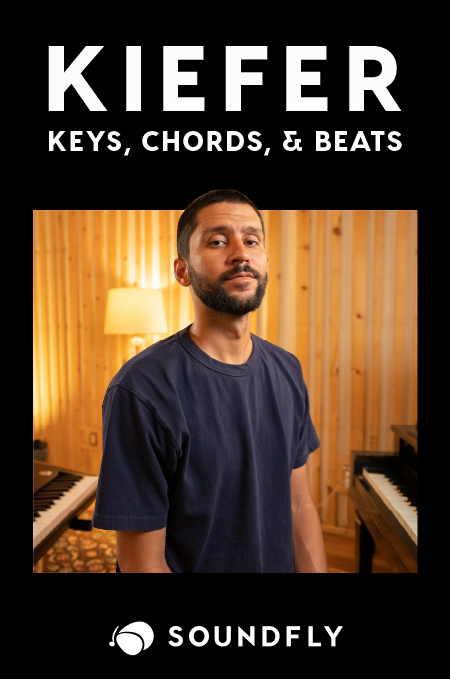+ Soundfly’s Intro to Scoring for Film & TV is a full-throttle plunge into the compositional practices and techniques used throughout the industry, and your guide for breaking into it. Preview for free today!
A few posts back, I wrote about mickeymousing, a film scoring technique in which the music closely imitates actions on screen. Good for cartoons and parodies, bad for most everything else. Another usually no-good compositional technique is continuous scoring, also known as wallpaper.
Wallpaper is film music that never seems to shut up. Instead of trusting the audience to know how to feel, it nudges and winks every time the emotion turns even slightly — Ooh see? It’s happy. Oh, now it’s sad. Oh! He surprised her. The genre films of Hollywood’s “Golden Age” (1927 to early 1960s) are notorious for unrelenting wallpaper of the distrustful kind.
High Noon (score by Dimitri Tiomkin) is a classic example. At 1:50-2:00, as Glinda the Good Witch chastises the sheriff, the movie’s main theme “Do Not Forsake Me Oh My Darling” plays in minor. Five seconds later as she says, “Oh Will, we were married just a few minutes ago,” it switches to major.
That may be the hammiest moment in all film music (1:34):
Here’s some typical wallpaper from the 1940s — The Strange Woman, score by Carmen Dragon (full clip below):
That kind of wall-to-wall scoring mostly ended in the early ’70s. But continuous scoring still makes an appearance, often with great results. When it maintains a single emotional arrow toward a climax instead of shadowing every emotional change, it can be really effective.
That’s especially true when the music persists despite emotional shifts in the action, as it does in this stunning scene from There Will Be Blood, the main score by Johnny Greenwood, this scene by Arvo Pärt (2:22):
Two small pauses, but still mostly continuous.
Then there’s my favorite, the kind of continuous scoring that serves as a unifying emotional thread through a montage of scene cuts. First this gorgeous, moving sequence, again from There Will Be Blood, by Johnny Greenwood (2:37):
Then there’s this heartbreaking thing. Instead of distrust, the continuous scoring plays a crucial part in establishing the emotion — and it takes me to pieces every time I see this film, Love Actually, song by Joni Mitchell (2:24):
Finally there’s the kind that elevates a scene, makes it epic. Repeating and building as it goes, this scoring by Hans Zimmer imbues a few mundane actions — man deplanes, walks through customs, arrives at house, greets children — with power and significance, Inception (3:42):
Have you checked out Soundfly’s courses yet?
Continue your learning with hundreds of lessons by boundary-pushing, independent artists like Kimbra, Ryan Lott & Ian Chang (of Son Lux), Jlin, Elijah Fox, Kiefer, Com Truise, The Pocket Queen, and RJD2. And don’t forget to try out our intro course on Scoring for Film & TV.
—
Dale McGowan has one foot in arts, the other in sciences, and the other in nonreligious life. He double-majored in music and evolutionary anthropology at UC Berkeley, then studied film scoring at UCLA before conducting a college orchestra while earning a Ph.D. in Composition from the University of Minnesota. Dale is managing editor of nonreligious writers at Patheos, the world’s largest website for multi-belief opinion. He teaches music at Oglethorpe University, is at work on a book about how music communicates emotion, and hosts the How Music Does That podcast.




